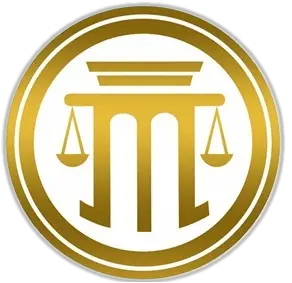With the outrage that anyone could experience because of series of events ensuing as one advances to adulthood, the need to control such heat is a must. This is to avoid any bad repercussions brought about by such anger. One of which is the possibility of being convicted of those criminally punishable offenses by the State.
The State has a duty to protect its people by virtue of its parens patriae principle rooted from its political authority breathe to life by no less than its Fundamental Law.
Indeed, such Fundamental Law does accord protection to the right of free speech; yet, it is not an unbridled license. This comes with limitations as well.
Instances of which are those speeches that may constitute crimes in themselves. One perfect example is a threat that is criminal in nature.
As per Merriam-Webster, “threat” is defined as “an expression of intention to inflict evil, injury or damage.”
Thus, a threat is not limited to verbal but may also be done through written means such as emails, text messages, as well as non-verbal body language.
However, this depends on the State whether it will consider verbal or written threats as crimes. Therefore, there must be a law punishing them by an act of the State through its legislature.
This is to say that there may be States which do not recognize gestures alone as a form of threat, punishable as a crime.
For a threat to be deemed as crime or felony, there must be a deliberate intention of the person making such threat to seriously injure or kill another.
It must be made in writing, verbally, or through any electronic communication. Regardless of the feasibility of the threat, the utterance has been made in a threatening manner that is designed to injure or cause damage to another.
The fear of one’s own safety or safety of his or her immediate family from the uttered threat is also taken into account.
Is a threat illegal?
Threats are illegal if they are criminal in nature. That is, if the same are punishable under the laws of a State. They are made criminal for the very reason that anyone’s right to safety must always be respected by everyone even by the local authorities.
In an American study of Wrongful Pressure in a Finding of Duress by Nicholas Rafferty, however, it found that “a threat of a lawful act can amount to a blackmail depending upon the purpose for which the threat is used.”
The fact that a person has the legal right to do an act does not automatically give him the right to threaten someone to perform that act. It is worth noting that Light threats may amount to blackmailing under the Philippine law.
Nonetheless, under Texas law, threatening someone, absent an intention to cause bodily harm, may result to a charge of Assault by Threat, if the plaintiff or person threatened decided to take legal action.
This is so speaking that threatening anyone, even if meant as a joke only or, otherwise, an intimidation is never treated lightly in some States.
If this is the case, anyone is advised to seek audience with a criminal lawyer and to avoid talking it out to the other party or else it would result to a bad outlook for the case.
What is legally considered a threat?
Legally speaking, under the Act No. 38151 or commonly known as the Revised Penal Code of the Philippines, threats are punishable if they are criminal in character. These are Grave Threats, Light Threats, and those that are considered Other Light Threats.
Grave Threats is defined2 as:
“any person who shall threaten another with the infliction upon the person, honor or property of the latter or of his family of any wrong amounting to a crime, shall suffer:
“(1) The penalty next lower in degree than that prescribed by law for the crime be threatened to commit, if the offender shall have made the threat demanding money or imposing any other condition, even though not unlawful, and said offender shall have attained his purpose. If the offender shall not have attained his purpose, the penalty lower by two degrees shall be imposed. If the threat be made in writing or through a middleman, the penalty shall be imposed in its maximum period;
“(2) The penalty of arresto mayor and a fine not exceeding One hundred thousand pesos (P100,000),3 if the threat shall not have been made subject to a condition.”
What are punishable threats under the law?
For easier determination of what acts are punishable under the law in the preceding paragraph, in Book Two of the The Revised Penal Code Criminal Law authored by Luis B. Reyes, the latter breaks them down to the following situations, to wit:
(1) by threatening another with the infliction upon his person, honor, or property or that of his family of any wrong amounting to a crime and demanding money or imposing any other condition, even though not unlawful, and the offender attained his purpose;
(2) by making such threat without the offender attaining his purpose;
(3) by threatening another with the infliction upon his person, honor or property or that of his family of any wrong amounting to a crime, the threat not being subject to a condition.
The crime of Grave Threat is consummated as soon as it came to the knowledge of the person being threatened. Hence, even if there is no attainment of the purpose of the person making the threat, it is still punishable because the same is considered criminal under the second form.
This is similarly pronounced in one case,4 where the accused threatened to bury alive the two victims, if they would not give the P50.00 demanded from each of them.
The accused were held guilty of two distinct offenses of grave threats, even if the money was not delivered. The crime of grave threats is consummated as soon as the threat comes to the knowledge of the person threatened.
Whilst Light Threats,5 the law provides that:
“any threat to commit wrong not constituting a crime, made in the manner expressed in subdivision 1 of the next preceding article, shall be punished by arresto mayor.
The elements provided by the similar author are:
(1) The offender makes a threat to commit a wrong;
(2) The wrong does not constitute a crime;
(3) There is a demand for money or that other condition is imposed, even though not unlawful; and,
(4) The offender has attained his purpose or, that he has not attained his purpose.
Therefore, it should be noted that, in this instance, light threats are committed in the same manner as grave threats, except that the wrong threatened to be committed should not be a crime.
As the threat made by the accused, that they would report the offended party to the authorities, did not constitute a crime, the crime committed by them when they made the threat demanding money was only light threats, defined and penalized in Article 283 of the Revised Penal Code.6
And under the Other Light Threats,7 “the penalty of arresto menor in its minimum period or a fine not exceeding Forty thousand pesos (P40,000),8 shall be imposed upon:
“(1) any person who, without being included in the provisions of the next preceding article, shall threaten another with a weapon, or draw such weapon in a quarrel, unless it be in lawful self- defense;
“(2) any person who, in the heat of anger, shall orally threaten another with some harm not constituting a crime, and who by subsequent acts shows that he did not persist in the idea involved in his threat: Provided, That the circumstances of the offense shall not bring it within the provisions of Article 282 of this Code;
“(3) any person who shall orally threaten to do another harm not constituting a felony”
Simply put, the acts that are punishable under the preceding article are:
(1) by threatening another with a weapon, or by drawing such weapon in a quarrel, unless it be in lawful self-defense;
(2) by orally threatening another, in the heat of anger, with some harm constituting a crime, without persisting in the idea involved in his threat;
(3) by orally threatening to do another any harm not constituting a felony.
Under this article, there is no demand for money or that there is no condition imposed when the offender threatens another with a weapon, and that the case does not fall in subdivision No. 2 of Article 282 [Penal Code].
Furthermore, the threat is not deliberate and since this is the case threats that are ordinarily considered grave threats but if stated in the heat of anger, may be other light threats.
In the case of People vs. Fontanilla,9 “where the threats are directed to a person who is absent and uttered in a temporary fit of anger, the offense is only light threats.”
Additionally, in grave threats, the wrong threatened amounts to a crime which may or may not be accompanied by a condition.
In light threats, the wrong threatened does not amount to a crime but is always accompanied by a condition.
In other light threats, the wrong threatened does not amount to a crime and there is no condition, as the Court decided in Caluag vs. People.10
‘Article 285, par. 1 (other light threats) is inapplicable although it specifically states, “shall threaten another with a weapon or draw such weapon in a quarrel”, since it presupposes that the threat to commit a wrong will not constitute a crime. That the threat to commit a wrong will constitute or not constitute a crime is the distinguishing factor between grave threats on one hand, and light and other light threats on the other.'11
Can you go to jail for threatening someone?
Without prejudice to the application of Probation and Recognizance [under RA No. 1038912], considering that punishable threats carries with them the penalties of arresto menor, arresto mayor, or the penalties two (2) degrees lower from the crime that the perpetrator intends to commit, it goes without saying that there is indeed a penalty of incarceration or imprisonment for that matter.
Hence, responding to the query, it is indeed a matter of consequence that the accused upon being convicted for the crime of threat can be placed in jail. However, as said, the convict can apply for probation or recognizance, as the case may be, whenever applicable.
Is a warning the same as threat?
Warning and Threat are not the same most of the time. Threat is the intention or will to cause bodily harm to another.
Yet, warning may serve as a way of informing or making someone aware of the possible or impending danger unto someone’s life.
It should be known that a threat being labeled just a warning does not make the same acceptable, especially when, in fact, it is criminal in nature.
By application of logic, not all warnings are threats since some of the former may be made calmly or made in less threatening or no emotion tone.
Nevertheless, the case is different if one’s warning concerns of a possible act under certain circumstances which itself is illegal, like destroying other’s property, thereby, treating it as an illegal threat.
It is not legal or allowable threat if the same is made to commit an act of violence. On the other hand, those that are originating from the right to do such things are lawful, such as a threat to sue someone if they breach a contract or damage to property and employer’s threat to fire an erring employee.
It is always a case-to-case basis that an inquiry as to the intention of the demand. The possibility to employ the essence of the threats made and the reasonable fear that would encase the person being threatened.
Closing Perspective
Going back in time and based on the cited several jurisprudences, the criminal court never took lightly the consequences of making threats to fellow citizens as early as 1930s.
It is true that there are certain rights that may be enforced. Nevertheless, one should not use the same for personal advantage or to commit duress.
The Courts are mindful of the possible setbacks of digging much into the instances where one is compelling someone to do something, which, upon failure to do so, would there be a threat of legal action. In fact, this does constitute a duress.
However, as some point, this may be a misapplication of justice, as susceptible to abuse. Emphasis on one who should be seeking the same or demanding from another to perform an act shall not be constantly and uniformly countenanced. One must stand with equal footing amongst others.
We may be possibly near to the period wherein such tactic may be prosecuted not only to protect the people from an outdated law but also to uphold the integrity of justice system, thus, preventing the evil from penetrating the desired order that justice is seeking to maintain and safeguard.
- Act No. 3815, otherwise known as the Revised Penal Code of the Philippines[↩]
- Article 282, Revised Penal Code[↩]
- Amended by Section 70, RA No. 10951[↩]
- People vs. Villanueva, et al., 48 O. G. 1376[↩]
- Article 283, Revised Penal Code[↩]
- People vs. Hao Y. Chao, et al., 54 O. G. 5334[↩]
- Article 285 of the Revised Penal Code[↩]
- Amended by Section 71, RA No. 10951[↩]
- G.R. No. 39248, February 3, 1934[↩]
- G.R. No. 171511, March 4, 2009[↩]
- Ibid.[↩]
- Republic Act No. 10389[↩]


